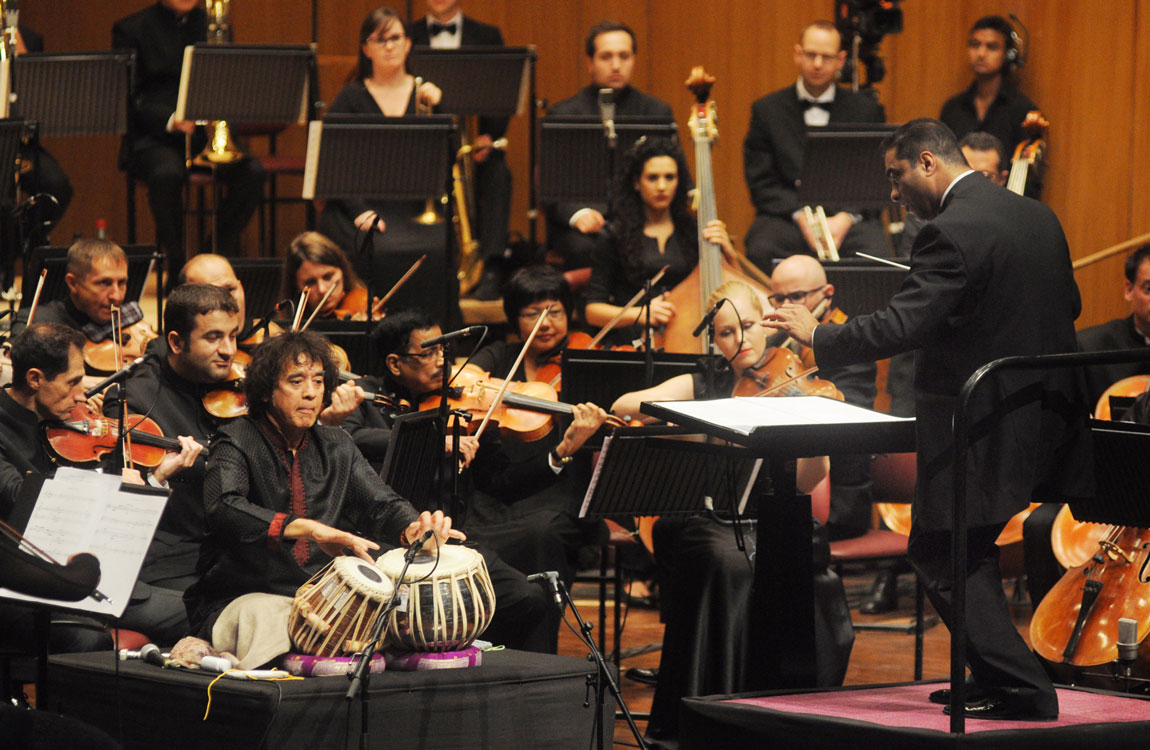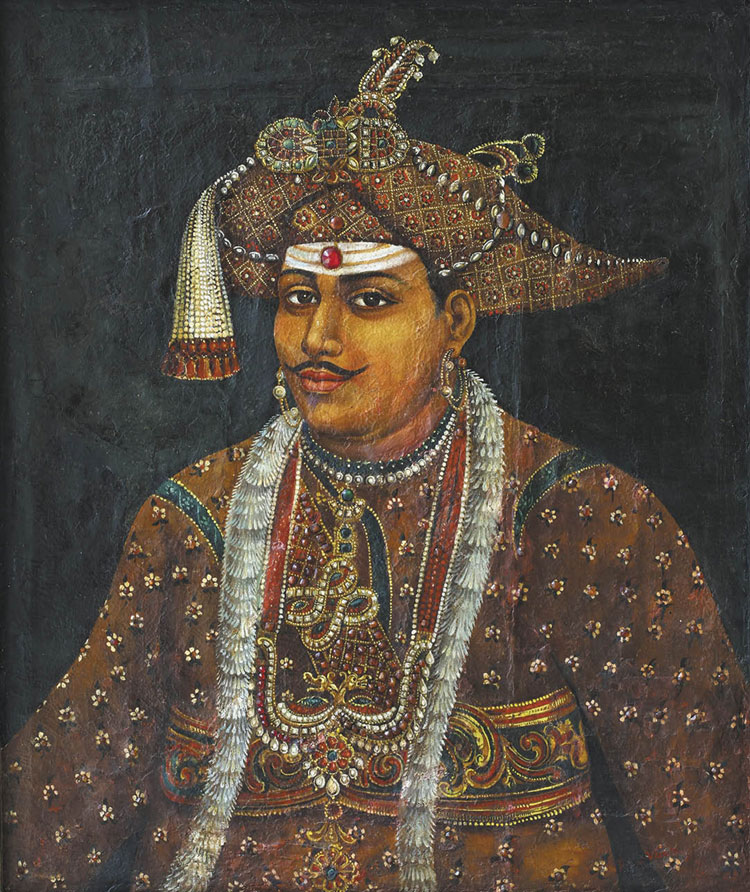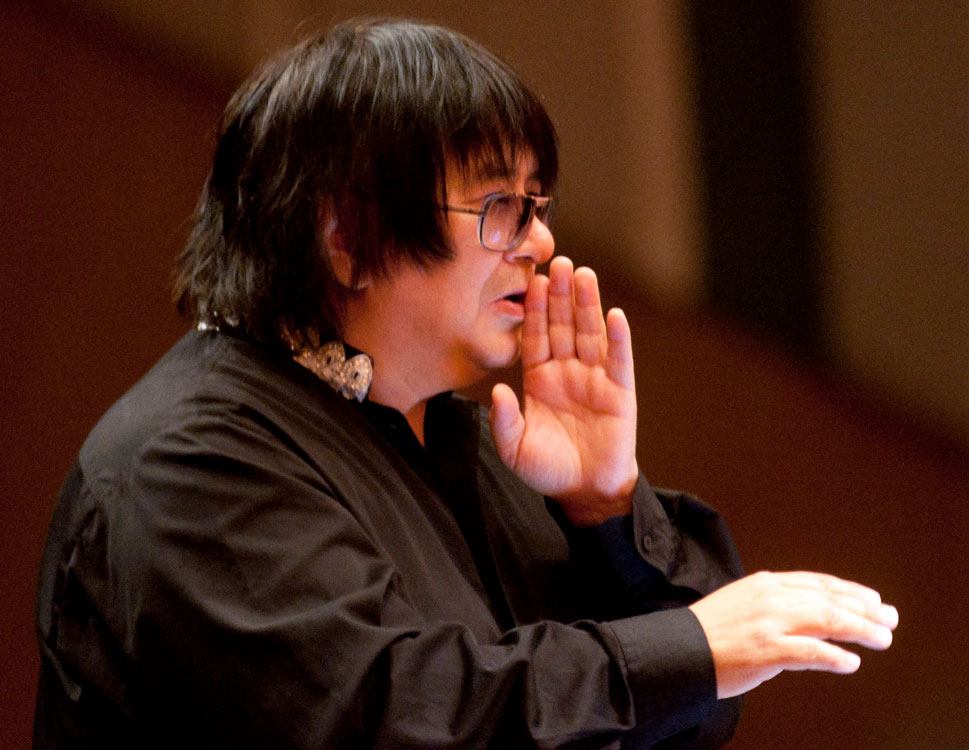Symphonic Music in India
Simon Broughton
Thursday, February 7, 2019
As the Symphony Orchestra of India makes its first ever visit to the UK this month, Simon Broughton traces the history of Western classical music in India

Playing Beethoven, Weber, Rimsky-Korsakov, Saint-Saëns, Rachmaninov and Bruch, the Symphony Orchestra of India (SOI) makes its first visit to the UK in February. Alongside the regular Western repertoire they are bringing an Indian piece, Peshkar, a concerto for tabla and orchestra, commissioned from the indisputable tabla maestro and percussionist Zakir Hussain. It’s a vibrant signature piece which works on the classical platform, but comes directly from the Indian tabla traditions passed on to him by his father Alla Rakha, who was Ravi Shankar’s favourite tabla player for many years. ‘When I’m playing I imagine that I’m calling on the spirits,’ he says, ‘so they will come and inject their energy into the rendering of the piece, so it has their blessing and the spirit that it needs.’
While Western classical soloists and orchestras have proliferated in China, Japan and South Korea, the situation is very different in India. ‘It’s a matter of national shame that we are the only professional symphony orchestra in India,’ admits Khushroo N Suntook, co-founder of the SOI.
Certainly the comparisons are startling. India (1.36 billion) and China (1.4 billion) have almost the same population, yet China has over 70 orchestras to India’s one. Tokyo has eight orchestras for a population of 9m, while Mumbai’s one orchestra serves a potential audience of double that (18m).
As China, Japan and South Korea had no Western colonisation, could there possibly be any post-colonial reason why orchestral music has not taken root in India? A question I put to Nikhil Sardana, founder and editor of Serenade, India’s first western classical music portal.
‘In colonial India music was not something that ever permeated into the Indian aesthetic conscious,’ Sardana says. ‘Moreover, whatever music the British brought with them to India was in the nature of song, marching band music and occasionally light classical music. The performance of these was confined to their own clubs, their exclusive social gatherings and within their own homes. As far as the latter goes it was in the tradition of Victorian parlour music.’

Curiously, it was certain Indian rulers who became interested in Western classical music. King Serfoji II of Thanjavur (1774-1832) encountered selections from Handel’s Messiah, Judas Maccabeus, Esther and his Coronation Anthem at a concert in Madras in 1794. He set up his own wind band trained by a British bandmaster to play in processions and at the royal court. In Mysore, Maharaja Krishnaraja Wadiyar IV (1894–1940) set up his own orchestra known as The Royal Carnatic Orchestra and his successor, Maharaja Jayachamaraja Wadiyar (1940-1971) was a concert pianist who became the first president of the Philharmonia Concert Society in London in 1948 and funded the Philharmonia Orchestra too.
Strangely enough, Western orchestras never toured India before Independence in 1947. The London Symphony Orchestra and the Israel Philharmonic both visited in the 1950s and there has been a growing number since. Some of the most enthusiastic Western classical music fans are from India’s Parsi community. Zubin Mehta is a Parsi, so is the SOI’s Associate Music Director Zane Dalal, as well as the co-founders Jamshed Bhabha and Khushroo Suntook and the Tata family who have helped support the NCPA. The Parsis, who came from Iran, settled largely in Mumbai. With great business acumen, they founded many industrial empires, so right from the beginning they were close to the British in India. They also had access to European culture because of their financial prosperity and travels.
But India, of course, has it’s own venerable heritage of classical music, completely different to that of the West. And it exerts a powerful influence. ‘Both Hindustani (North Indian) and Karnatic (South Indian) music have the same kind of domination in this country as art music has had in Europe over the centuries,’ explains Sardana. ‘Both these art music traditions in India have a very complex structure, grammar and style and the concept of ensemble playing does not exist in either of these cultures. The music is linear and played either solo or in a duet with percussion accompaniment. The concept of orchestral music therefore has never been absorbed. As far as training and facilities go, these have been very strong but only in the field of Indian classical music where every school gharana imparts the most rigorous training to its students. The same kind of training was never in demand for Western music until today.’
For Khushroo Suntook, the main obstacle to symphonic music is the lack of suitable venues. ‘Zubin [Mehta] complained to the prime minister that there was only one symphony hall in the whole of India when he went to Delhi to get an award,’ Suntook laughs. He created the SOI in 2006 with Jamshed Bhabha, the founder of the National Centre for Performing Arts (NCPA) situated on reclaimed land from the Indian Ocean at the end of Marine Drive in the centre of Mumbai. The orchestra performs in the 1100-seat Jamshed Bhabha Hall which opened in 1999.

Suntook first saw violinist Marat Bisengaliev conducting his Kazakh orchestra in London and invited them out to perform at the NCPA. Finally he suggested starting the SOI. ‘I told him "you have to get as many Indians as you can in it. I want to create a culture of fine Indian players". He said, "if they’re good enough I will take them but if they’re not you’ll have to start with my people and have the others follow on." Now we have 16-20 Indian players after 10 years.’
‘When the Soviet Union broke up it left conservatoire-trained and highly skilled professional musicians with less work than before,’ Sardana adds. ‘They moved to other countries. Naturally as part of the erstwhile Soviet Union these musicians had top class training and facilities which we in India are in the process of building up. I certainly see a day when more and more Indian musicians trained in Western classical traditions will move out of the amateur field and into the professional. Currently, we have some extraordinary talent but due to lack of financially viable opportunities they have made their careers either playing for the film industry or in the West. Cities like Kolkata, Bengaluru, Panjim, Kochi and Chennai have amateur chamber ensembles and I think from these we can expect a movement towards members becoming a part of a professional symphony orchestra.’
Currently the SOI has some resident members in Mumbai, but most players, including some British wind players, come for two seasons a year of three weeks to a month. On the British tour, two of the concerts feature Rimsky-Korsakov’s Scheherazade - a Western composer’s orientalist view of the East - alongside Zakir Hussain’s Indian take on the Western concerto form. Those differing perspectives are perhaps what makes an orchestra like the SOI worth hearing. ‘We are all creatures of habit,’ says Zakir Hussain. ‘Indian musicians and jazz musicians improvise a lot and we can work with musicians outside our tradition. Western musicians often find it difficult stepping outside their tradition, but in today’s world you are seeing and hearing music from all over, so perhaps that’s changing.’
The SOI are on tour February 19-25 in Birmingham, London, Cardiff, Guildford and Edinburgh. For further information, please visit: soimumbai.com/uktour











